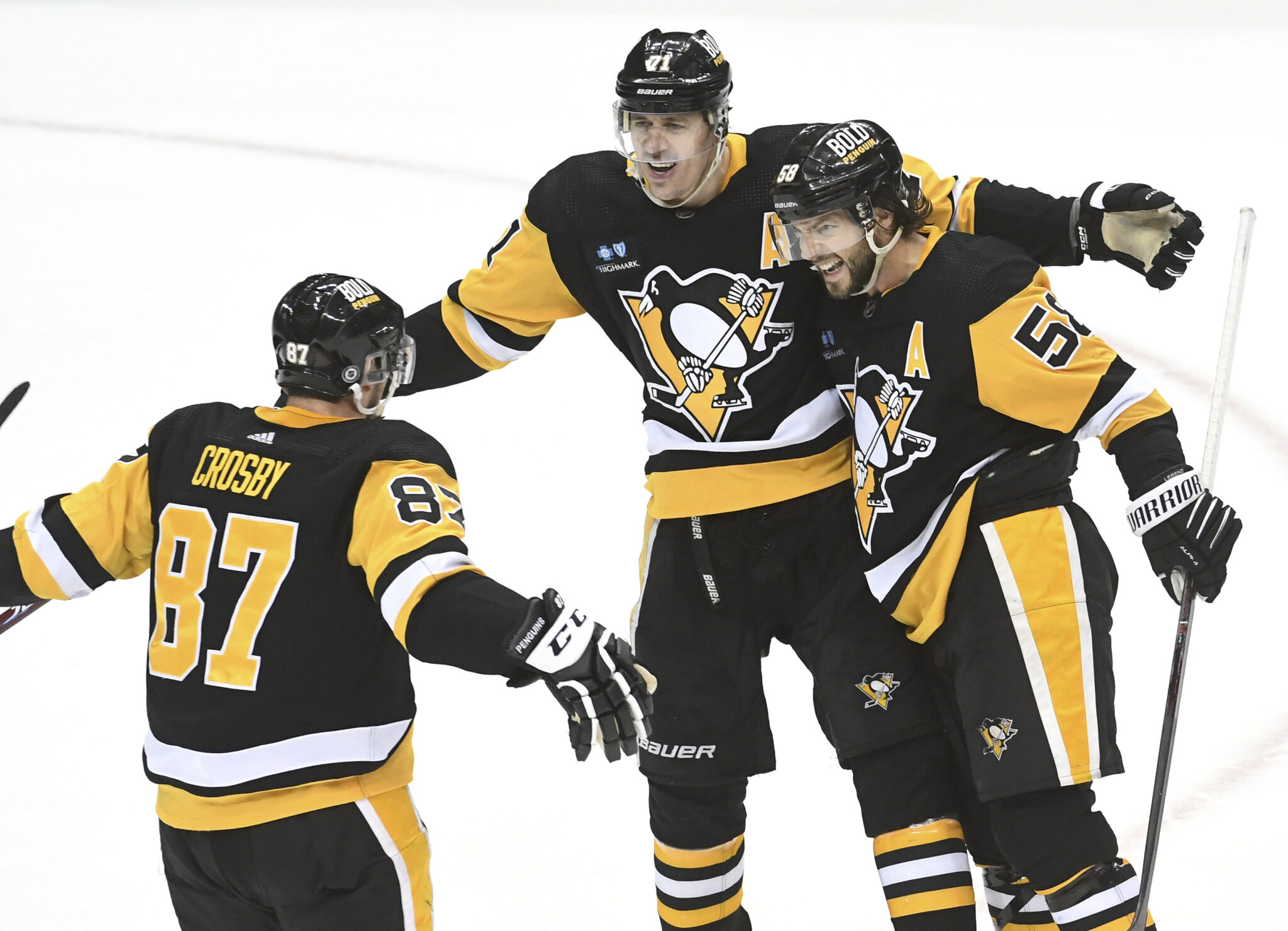Penguins
Five Reasons Penguins Could Fizzle, not Sizzle, in 2023-24

The Pittsburgh Penguins will open training camp Thursday, flush with more optimism than the organization has generated in a number of years.
And with good reason.
Since taking over as president of hockey operations in June, Kyle Dubas not only has acquired Erik Karlsson, the incumbent Norris Trophy winner as the NHL’s top defenseman, but bolstered the third and fourth lines so much that the battles for spots on both during camp could be ferocious.
The Penguins aren’t going to be atop anyone’s power rankings — hey, Dubas works in management, not magic — but opponents would be well-advised to prepare for a team that is faster and more focused than it has been in a few years.
Unless, of course, the Penguins — a lightning rod for misfortune at various points in their existence — are blindsided by things that break the wrong way.
That can’t be ruled out, because the question is not whether any team will face adversity over the course of a season, since every club does; the issues are how severe that adversity is, and how the team deals with it.
Here’s a look at five variables with the potential to sabotage the Pittsburgh Penguins’ 2023-24 season:
Injuries
This already is a problem for the Penguins, as they are expected to be without first-line left winger Jake Guentzel in the early weeks of the season as he recovers from ankle surgery.
What’s more, teams have only a small measure of control over whether their personnel make it through a season with a limited number of man-games lost.
Getting players well-conditioned and giving them as much rest as possible (and practical) is imperative, but those things don’t guard against, say, a skate blade catching a rut in the ice and causing an issue with an ankle or knee, a puck being deflected under a player’s visor or a blocked shot fracturing a foot bone.
Conventional wisdom holds that it’s better to be lucky than good, but the reality is that if a team is to succeed in the NHL, it likely will have to be both.
Power play
Part of the appeal of adding Karlsson is that he could invigorate the Penguins’ power play, which was remarkably ordinary last season.
It finished with a conversion rate of just 21.7 percent, placing behind 13 other clubs in the NHL rankings. A power play headlined by the likes of Sidney Crosby, Evgeni Malkin, Kris Letang and Guentzel should be better. A lot better.
The addition of Karlsson, who seems like a logical candidate to replace Letang on the left point of the No. 1 unit, might be enough to goose the unit’s output. If it’s not, frustration levels and blood pressures figure to spike on a regular basis.
Goaltending
If a team doesn’t have good goaltending, it doesn’t matter what its 18 skaters do. Whether Tristan Jarry can provide that — or better — on a consistent basis remains to be seen.
There’s no question that Jarry, to whom the Pittsburgh Penguins made a five-year, $26,875,000 commitment this summer, is able to perform at a high level. It remains to be seen, however, if he can do it on a night-in, night-out basis for an extended period — and stay healthy in the process.
And if he helps the Penguins qualify for the Stanley Cup playoffs, the issue of Jarry’s checkered history in the postseason — he’s 2-6, with a 3.00 goals-against average and .891 save percentage — since reaching the NHL is likely to resurface.
Penalty-kill
It was not so long ago that the Penguins’ shorthanded unit was among the very best in the NHL.
Does seem like quite a while, though, doesn’t it?
Last season, it plummeted to 16th place in the NHL rankings, with a success rate of just 79.1 percent. That was down from 84.4 percent in 2021-22, when it placed third in the league.
It’s not a stretch to suggest that effective special teams can significantly enhance the chances a team will have a productive season. The Pittsburgh Penguins finished a paltry +2 in 5-on-4 goals-for/against in 2022-23 (52-50); putting a little more distance between those numbers during the coming season is critical if they hope to move up in the standings.
Age
The average Age of the core members of this team — Crosby, Malkin, Letang and Karlsson — falls somewhere between Stone and Bronze. Karlsson, at 33, is the youngest of that group by at least three years, so his colleagues are getting perilously close to qualifying for senior discounts.
There was a time when most players on the far side of 30 were entering the twilight of their careers, but the emphasis on things like nutrition and conditioning — it’s been years since guys used training camp to work themselves into playing shape — has allowed many to be productive for much longer than once was the case.
Still, it’s not a stretch to suggest that, in general, older players might be more susceptible to injuries than younger teammates and more likely to wear down over the course of a grinding, 82-game schedule.
Crosby, Karlsson and Letang seemed to largely clear those hurdles in 2022-23 — it’s difficult to accurately assess Letang, because he went through such an atypical winter — but they obviously are a year older now, so it would be folly to assume the coming season will be equally uneventful for them.











